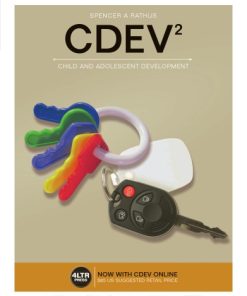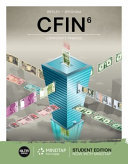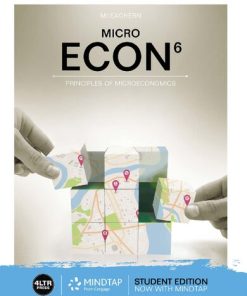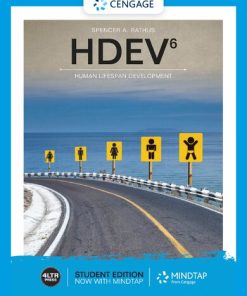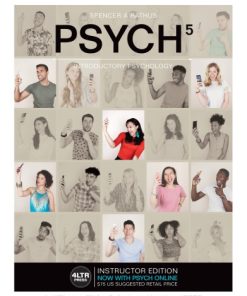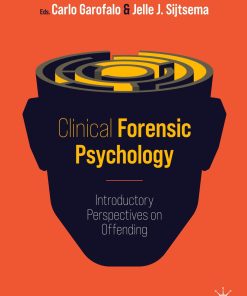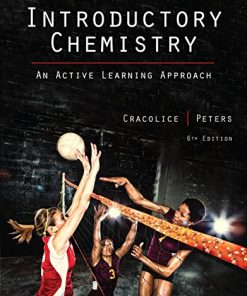PSYCH 6 Introductory Psychology 6th Edition by Spencer Rathus 8214351421 9798214351421
$50.00 Original price was: $50.00.$25.00Current price is: $25.00.
PSYCH 6: Introductory Psychology 6th Edition by Spencer A. Rathus – Ebook PDF Instant Download/DeliveryISBN: 8214351421, 9798214351421
Full download PSYCH 6: Introductory Psychology 6th Edition after payment.

Product details:
ISBN-10 : 8214351421
ISBN-13 : 9798214351421
Author: Spencer A. Rathus
Through ongoing research into students’ workflows and preferences, PSYCH from 4LTR Press combines an easy-reference textbook with and an innovative online experience–all at an affordable price. New for this edition, MindTap is the digital learning solution that powers students from memorization to mastery. It gives you complete control of your course–to provide engaging content, to challenge every individual and to build their confidence.
PSYCH 6: Introductory Psychology 6th Table of contents:
1. What Is Psychology?
1-1. Psychology as a Science
1-1a. What Psychologists Do
1-1b. Fields of Psychology
1-2. Historical Foundations of Psychology
1-2a. Structuralism
1-2b. Functionalism
1-2c. Behaviorism
1-2d. Gestalt Psychology
1-2e. Psychoanalysis
1-3. Contemporary Perspectives in Psychology
1-3a. The Biological Perspective
1-3b. The Cognitive Perspective
1-3c. The Humanistic–Existential Perspective
1-3d. The Psychodynamic Perspective
1-3e. Perspectives on Learning
1-3f. The Sociocultural Perspective
1-4. How Psychologists Study Behavior and Mental Processes
1-4a. The Scientific Method
1-4b. Samples and Populations
1-4c. Problems in Generalizing from Psychological Research
1-5. Methods of Research
1-5a. Methods of Observation
1-5b. Correlation
1-5c. The Experimental Method
1-6. Ethics in Psychological Research
1-6a. Ethics of Research with Humans
1-6b. Ethics of Research with Animals
1-7. Critical Thinking
1-7a. Principles of Critical Thinking
Self-Assessment
Self-Assessment
Fill-Ins
Multiple Choice
2. Biology and Psychology
2-1. The Nervous System: On Being Wired
2-1a. Neurons: Into the Fabulous Forest
2-1b. The Neural Impulse: “The Body Electric”
2-1c. Neurotransmitters: The Chemical Keys to Communication
2-2. The Divisions of the Nervous System
2-2a. The Peripheral Nervous System: The Body’s Peripheral Devices
2-2b. The Central Nervous System: The Body’s Central Processing Unit
2-3. The Brain: Wider Than the Sky
2-3a. Understanding the Brain
2-3b. Experimenting with the Brain
2-4. A Voyage through the Brain
2-5. The Cerebral Cortex
2-5a. The Structure of the Cerebral Cortex
2-5b. Thinking, Language, and the Cerebral Cortex
2-5c. Left Brain, Right Brain?
2-5d. Handedness
2-5e. Split-Brain Experiments
2-6. The Endocrine System
2-6a. The Pituitary and the Hypothalamus
2-6b. The Pineal Gland
2-6c. The Thyroid Gland
2-6d. The Adrenal Glands
2-6e. The Testes and the Ovaries
2-7. Evolution and Heredity
2-7a. Evolutionary Psychology: Doing What Comes Naturally
2-7b. Heredity, Genetics, and Behavioral Genetics
2-7c. Genes and Chromosomes
2-7d. Kinship Studies
Application
Fill-Ins
Multiple Choice
3. Sensation and Perception
3-1. Sensation and Perception
3-1a. Absolute Threshold
3-1b. Subliminal Stimulation
3-1c. Difference Threshold
3-1d. Signal–Detection Theory
3-1e. Feature Detectors in the Brain
3-1f. Sensory Adaptation
3-2. Vision
3-2a. Light
3-2b. The Eye
3-2c. Color Vision
3-2d. Theories of Color Vision
3-2e. Color Blindness
3-3. Visual Perception
3-3a. Perceptual Organization
3-3b. Perception of Motion
3-3c. Depth Perception
3-3d. Perceptual Constancies
3-3e. Visual Illusions
3-4. Hearing
3-4a. Pitch and Loudness
3-4b. The Ear
3-4c. Locating Sounds
3-4d. Perception of Loudness and Pitch
3-4e. Deafness
3-5. The Other Senses
3-5a. The Chemical Senses: Smell and Taste
3-5b. The Skin Senses
3-5c. Kinesthesis and the Vestibular Sense
3-6. ESP: Is There Perception Without Sensation?
Application
Application
Fill-Ins
Multiple Choice
4. Consciousness
4-1. What Is Consciousness?
4-1a. Consciousness as Awareness
4-1b. Conscious, Preconscious, Unconscious, and Nonconscious
4-1c. Consciousness as Personal Unity
4-1d. Consciousness as the Waking State
4-2. Sleep and Dreams
4-2a. Biological and Circadian Rhythms
4-2b. The Stages of Sleep
4-2c. The Functions of Sleep
4-2d. Dreams
4-2e. Sleep Disorders
4-3. Altering Consciousness: Hypnosis, Meditation, and Biofeedback
4-3a. Hypnosis
4-3b. Meditation
4-3c. Biofeedback
4-4. Altering Consciousness through Drugs
4-4a. Substance Use and Substance Use Disorders
4-4b. Causal Factors in Substance Use Disorders
4-5. Depressants
4-5a. Alcohol
4-5b. Opiates and Opioids
4-5c. Barbiturates
4-6. Stimulants
4-6a. Amphetamines and Related Stimulants
4-6b. Nicotine
4-7. Hallucinogenics
4-7a. Marijuana
4-7b. LSD and Other Hallucinogenics
Application
Self-Assessment
Fill-Ins
Multiple Choice
5. Learning
5-1. Learning, Experience, and Change
5-2. Classical Conditioning: Learning What Is Linked to What
5-2a. Explaining Classical Conditioning
5-2b. Stimuli and Responses in Classical Conditioning
5-2c. Extinction and Spontaneous Recovery
5-2d. Generalization and Discrimination
5-2e. Higher-Order Conditioning
5-3. Applications of Classical Conditioning
5-3a. Taste Aversion
5-3b. “Little Albert”: Classical Conditioning of Emotional Responses
5-3c. Counterconditioning
5-3d. Flooding and Systematic Desensitization
5-4. Operant Conditioning: Learning What Does What to What
5-4a. Edward L. Thorndike and the Law of Effect
5-4b. B. F. Skinner and Reinforcement
5-4c. Methods of Operant Conditioning
5-4d. Types of Reinforcers
5-4e. Extinction and Spontaneous Recovery in Operant Conditioning
5-4f. Reinforcers versus Rewards and Punishments
5-4g. Discriminative Stimuli
5-4h. Schedules of Reinforcement
5-5. Applications of Operant Conditioning
5-5a. Biofeedback Training
5-5b. Shaping
5-5c. Behavior Modification
5-5d. Programmed Learning
5-6. Cognitive Factors in Learning
5-6a. Latent Learning: Forming Cognitive Maps
5-6b. Contingency Theory
5-6c. Observational Learning
5-6d. Violence in the Media and Aggression
Application
Fill-Ins
Multiple Choice
6. Memory: Remembrance of Things Past—and Future
6-1. Kinds of Memory
6-1a. Explicit Memory
6-1b. Implicit Memory
6-1c. Retrospective Memory versus Prospective Memory
6-2. Processes of Memory
6-2a. Encoding
6-2b. Storage
6-2c. Retrieval
6-3. Sensory Memory
6-3a. Iconic Memory
6-3b. Iconic Memory and Saccadic Eye Movement
6-3c. Echoic Memory
6-4. Short-Term Memory
6-4a. The Serial-Position Effect
6-4b. Chunking
6-4c. Interference in Short-Term Memory
6-5. Long-Term Memory
6-5a. How Accurate Are Long-Term Memories?
6-5b. How Much Information Can Be Stored in Long-Term Memory?
6-5c. Levels of Processing Information
6-5d. Flashbulb Memories
6-5e. Organization in Long-Term Memory
6-5f. The Tip-of-the-Tongue Phenomenon
6-5g. Context-Dependent Memory
6-6. Forgetting
6-6a. Memory Tasks Used in Measuring Forgetting
6-6b. Interference Theory
6-6c. Repression
6-6d. Infantile Amnesia
6-6e. Anterograde and Retrograde Amnesia
6-7. The Biology of Memory
6-7a. Neural Activity and Memory
6-7b. Brain Structures and Memory
Application
Fill-Ins
Multiple Choice
7. Thinking, Language, and Intelligence
7-1. Thinking
7-1a. Concepts
7-1b. Problem Solving
7-1c. Methods of Problem Solving
7-1d. Factors That Affect Problem Solving
7-1e. Judgment and Decision Making
7-1f. Motivated Reasoning
7-2. Language
7-2a. Communication by Nonhumans
7-2b. What Is Language?
7-2c. Language and Cognition
7-2d. Language and Culture
7-3. Language Development: The Two-Year Explosion
7-3a. Prelinguistic Vocalizations
7-3b. Development of Grammar
7-3c. Nature and Nurture in Language Development
7-4. Theories of Intelligence
7-4a. Factor Theories
7-4b. The Theory of Multiple Intelligences
7-4c. The Triarchic Theory of Intelligence
7-4d. Emotional Intelligence and Social Intelligence
7-4e. Creativity and Intelligence
7-5. The Measurement of Intelligence
7-5a. The Stanford–Binet Intelligence Scale
7-5b. The Wechsler Scales
7-5c. Group Tests
7-5d. The Reliability and Validity of Intelligence Tests
7-5e. Differences in Intellectual Functioning
7-6. Nature and Nurture in Intelligence
7-6a. Genetic Influences on Intelligence
7-6b. Environmental Influences on Intelligence
Application
Fill-Ins
Multiple Choice
8. Motivation and Emotion
8-1. The Psychology of Motivation
8-2. Theories of Motivation
8-2a. The Evolutionary Perspective
8-2b. Drive-Reductionism and Homeostasis
8-2c. The Search for Stimulation
8-2d. Humanistic Theory
8-2e. Cognitive Perspectives on Motivation
8-3. Hunger
8-3a. Biological Influences on Hunger
8-3b. Psychological Influences on Hunger
8-3c. Being Overweight: A Serious and Pervasive Problem
8-3d. Eating Disorders
8-4. Sexual Motivation and Sexual Orientation
8-4a. Hormones and Sexual Motivation
8-4b. Sexual Response and Sexual Behavior
8-4c. Surveys of Sexual Behavior
8-4d. Sexual Orientation and Gender Identity
8-5. Achievement Motivation
8-5a. Extrinsic versus Intrinsic Motives
8-6. Emotion
8-6a. The Expression of Emotions
8-6b. Positive Psychology
8-6c. The Facial-Feedback Hypothesis
8-7. Theories of Emotion
8-7a. The James–Lange Theory
8-7b. The Cannon–Bard Theory
8-7c. The Theory of Cognitive Appraisal
8-7d. Evaluation
Application
Application
Fill-Ins
Multiple Choice
9. The Voyage through the Life Span
9-1. Prenatal Development
9-2. Childhood: Physical Development
9-2a. Reflexes
9-2b. Motor Development
9-2c. Perceptual Development
9-3. Childhood: Cognitive Development
9-3a. Jean Piaget’s Cognitive-Development Theory
9-3b. Piaget’s Stages of Cognitive Development
9-3c. Evaluation of Piaget’s Theory
9-3d. Lev Vygotsky’s Sociocultural Theory
9-3e. Lawrence Kohlberg’s Theory of Moral Development
9-3f. Evaluation of Kohlberg’s Theory
9-4. Childhood: Social and Emotional Development
9-4a. Erik Erikson’s Stages of Psychosocial Development
9-4b. Attachment
9-4c. Parenting Styles
9-5. Adolescence
9-5a. Physical Development
9-5b. Cognitive Development
9-5c. Social and Emotional Development
9-6. Emerging Adulthood
9-7. Adulthood
9-7a. Physical Development
9-7b. Cognitive Development
9-7c. Social and Emotional Development
Application
Application
Fill-Ins
Multiple Choice
10. Personality: Theory and Measurement
10-1. The Psychodynamic Perspective
10-1a. Sigmund Freud’s Theory of Psychosexual Development
10-1b. Neo-Freudians
10-1c. Evaluation of the Psychodynamic Perspective
10-2. The Trait Perspective
10-2a. From Hippocrates to the Present
10-2b. Hans Eysenck’s Trait Theory
10-2c. The “Big Five”: The Five-Factor Model
10-2d. Biology and Traits
10-2e. Evaluation of the Trait Perspective
10-3. Learning-Theory Perspectives
10-3a. Behaviorism
10-3b. Social Cognitive Theory
10-3c. Evaluation of the Learning Perspective
10-4. The Humanistic–Existential Perspective
10-4a. Abraham Maslow and the Challenge of Self-Actualization
10-4b. Carl Rogers’s Self Theory
10-4c. Evaluation of the Humanistic–Existential Perspective
10-5. The Sociocultural Perspective
10-5a. Individualism versus Collectivism: Who Am I (In This Cultural Setting)?
10-5b. Acculturation, Adjustment, and Self-Esteem
10-5c. Evaluation of the Sociocultural Perspective
10-6. Measurement of Personality
10-6a. Objective Tests
10-6b. Projective Tests
Self-Assessment
Fill-Ins
Multiple Choice
11. Stress, Health, and Coping
11-1. Stress: What It Is, Where It Comes From
11-1a. Daily Hassles and Life Changes
11-1b. Stress in America
11-1c. Conflict
11-1d. Irrational Beliefs
11-1e. The Type A Behavior Pattern
11-2. Psychological Moderators of Stress
11-2a. Self-Efficacy Expectations: “The Little Engine That Could”
11-2b. Psychological Hardiness
11-2c. Sense of Humor
11-2d. Predictability and Control
11-2e. Emotional Support
11-3. Stress and the Body
11-3a. The General Adaptation Syndrome
11-3b. Effects of Stress on the Immune System
11-4. Psychology and Chronic Health Problems
11-4a. Coronary Heart Disease
11-4b. Cancer
Self-Assessment
Fill-Ins
Multiple Choice
12. Psychological Disorders
12-1. What Are Psychological Disorders?
12-1a. Perspectives on Psychological Disorders
12-1b. Classifying Psychological Disorders
12-1c. Prevalence of Psychological Disorders
12-2. Anxiety Disorders
12-2a. Specific Phobic Disorders
12-2b. Social Anxiety Disorder
12-2c. Panic Disorder
12-2d. Generalized Anxiety Disorder
12-2e. Origins of Anxiety Disorders
12-3. Obsessive–Compulsive and Related Disorders
12-3a. Obsessive–Compulsive Disorder
12-3b. Hoarding Disorder
12-4. Trauma- and Stressor-Related Disorders
12-4a. Posttraumatic Stress Disorder
12-4b. Acute Stress Disorder
12-5. Dissociative Disorders
12-5a. Dissociative Identity Disorder
12-5b. Dissociative Amnesia
12-5c. Depersonalization–Derealization Disorder
12-5d. Origins of Dissociative Disorders
12-6. Somatic Symptom and Related Disorders
12-6a. Illness Anxiety Disorder
12-6b. Conversion Disorder
12-6c. Origins of Somatic Symptom and Related Disorders
12-7. Mood Disorders
12-7a. Bipolar Disorder
12-7b. Depressive Disorders
12-7c. Suicide
12-8. Schizophrenia and Other Psychotic Disorders
12-8a. Schizophrenia
12-8b. Delusional Disorder
12-8c. Explaining Schizophrenia
12-9. Personality Disorders
12-9a. Paranoid Personality Disorder
12-9b. Schizoid Personality Disorder
12-9c. Schizotypal Personality Disorder
12-9d. Antisocial Personality Disorder
12-9e. Borderline Personality Disorder
12-9f. Avoidant Personality Disorder
12-9g. Origins of Personality Disorders
Self-Assessment
Fill-Ins
Multiple Choice
13. Methods of Therapy
13-1. What Is Psychotherapy?
13-1a. The History of Therapies
13-2. Psychodynamic Therapies
13-2a. Traditional Psychoanalysis
13-2b. Modern Psychodynamic Approaches
13-3. Humanistic Therapies
13-3a. Client-Centered Therapy
13-3b. Gestalt Therapy
13-4. Behavior Therapy
13-4a. Fear-Reduction Methods
13-4b. Aversive Conditioning
13-4c. Operant Conditioning Procedures
13-5. Cognitive Therapies
13-5a. Aaron Beck’s Cognitive Therapy
13-5b. Albert Ellis’s Rational Emotive Behavior Therapy
13-5c. Cognitive Behavioral Therapy
13-6. Group Therapies
13-6a. Couple Therapy
13-6b. Family Therapy
13-6c. Self-Help and Support Groups
13-7. Does Psychotherapy Work?
13-7a. Evidence-Based Practices
13-7b. Ethnicity and Psychotherapy
13-8. Biological Therapies
13-8a. Drug Therapy
13-8b. Electroconvulsive Therapy
13-8c. Psychosurgery
13-8d. Does Biological Therapy Work?
Application
Fill-Ins
Multiple Choice
14. Social Psychology
14-1. Attitudes
14-1a. Attitude Formation
14-1b. Predicting Behavior from Attitudes
14-1c. Changing Attitudes through Persuasion
14-1d. Changing Attitudes and Behavior by Means of Cognitive Dissonance
14-2. Prejudice and Discrimination
14-2a. Stereotyping
14-2b. Sources of Prejudice
14-2c. Combating Prejudice
14-3. Attraction and Love
14-3a. Physical Appearance
14-3b. Gender Differences in Selection of a Romantic Partner
14-3c. The Attraction–Similarity Hypothesis
14-3d. Love
14-4. Social Perception
14-4a. Primacy and Recency Effects
14-4b. Attribution Theory
14-5. Social Influence
14-5a. Obedience to Authority
14-5b. Conformity
14-5c. Factors that Influence Conformity
14-6. Aggression
14-6a. Biology, Chemistry, and Aggression
14-6b. Psychological Aspects of Aggression
14-7. Group Behavior
14-7a. Social Facilitation
14-7b. Group Decision Making
14-7c. Polarization and the “Risky Shift”
14-7d. Groupthink
14-7e. MOB Behavior and Deindividuation
14-7f. Altruism and the Bystander Effect
People also search for PSYCH 6: Introductory Psychology 6th:
psych 6 introductory psychology
is introductory psychology hard
what is introductory psychology
introductory topics in psychology
psych 6 introductory psychology pdf
Tags: PSYCH 6, Introductory, Psychology, Spencer Rathus
You may also like…
History & Research
Business & Economics - Professional Finance
Business & Economics - Economics
History & Research
HDEV 6: Human Lifespan Development 6th Edition Spencer A. Rathus
History & Research
PSYCH 5: Introductory Psychology 5th Edition Spencer A. Rathus
Psychology - Clinical Psychology
Clinical Forensic Psychology: Introductory Perspectives on Offending
Politics & Philosophy - Anthropology
Exploring philosophy an introductory anthology 6th Edition by Steven Cahn 0190674334 978-0190674335




